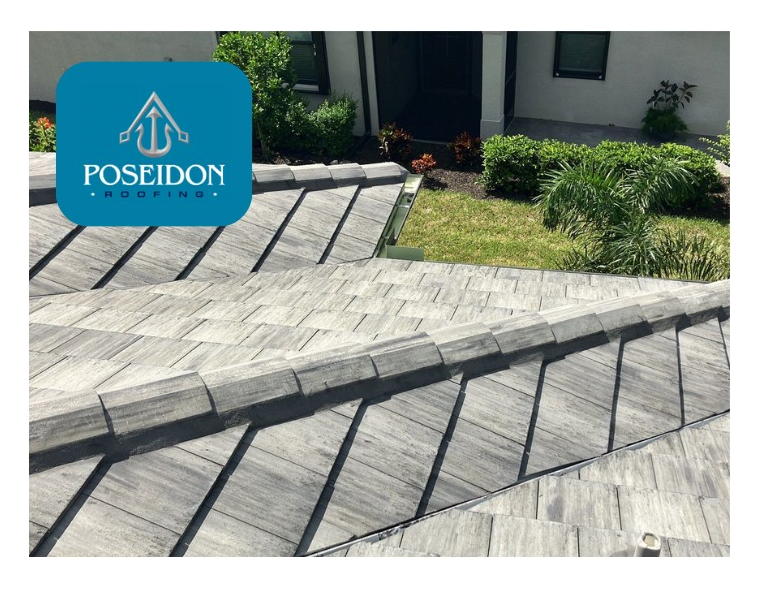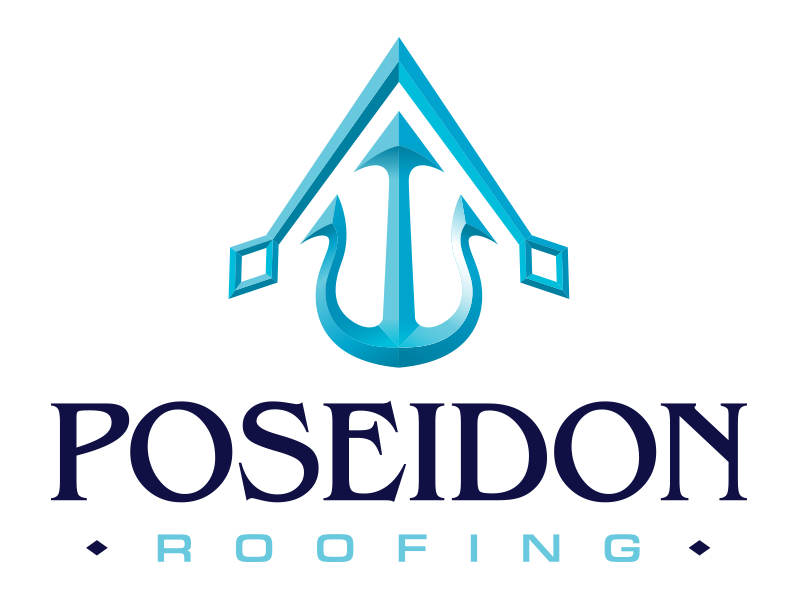Blog
The Pillars of Quality and Durability: Professional Installation of Poseidon Roofing

When it comes to maintaining your property, one crucial aspect that often requires attention is roof repairs. Unlike sloped roofs, flat roofs present unique challenges and vulnerabilities that demand specialized care. In this comprehensive guide, we’ll delve into everything you need to know about flat roofing materials and repairs, from common issues to repair methods and when to seek professional assistance.
Understanding Flat Roofs
Flat roofs, as the name suggests, lack significant slopes, making them prone to water pooling and leakage. Typically found in commercial buildings, extensions, and modern residential architecture, flat roofs offer practical advantages but require vigilant maintenance to prevent problems like leaks and deterioration.
Identifying Flat Roof Issues
Before diving into your roof repair kit and methods, it’s essential to identify common problems that plague flat roofs. Understanding these issues can help prioritize repairs and prevent further damage. Here are some key concerns to watch out for:
1. Leaks and Moisture Intrusion
A leaking or flat roof leaking which is a prevalent issue caused by various factors such as:
-
Poor drainage systems lead to standing water.
-
Damaged or deteriorating roofing materials.
-
Cracks, gaps, or punctures in the roof membrane.
2. Ponding Water
Flat roofs often suffer from ponding water, where water accumulates due to inadequate drainage. This can lead to:
-
Accelerated deterioration of roofing materials.
-
Increased risk of leaks and structural damage.
-
Algae and moss growth, further compromising the roof’s integrity.
3. Membrane Damage
The membrane is a critical component of roofs, providing waterproofing and protection. Damage to the membrane can result from:
-
UV exposure causes degradation and brittleness.
-
Mechanical damage from foot traffic, equipment, or debris.
-
Poor installation or manufacturing defects.
4. Blistering and Bubbling
Blisters or bubbles on the top layer of the roof surface are signs of underlying issues such as:
-
Moisture trapped beneath the roofing material.
-
Thermal expansion and contraction.
-
Inadequate ventilation causes heat buildup.
Flat Roof Repair Techniques
While some roof repairs require professional intervention, there are certain tasks that diligent property owners can tackle themselves. Here are some DIY repair techniques for common flat roof issues:
1. Patching Leaks with Roofing Cement
For minor roof leaks only, roofing cement can be an effective temporary solution. Follow these steps:
-
Clean the area around the leak thoroughly.
-
Apply roofing cement generously over the affected area, ensuring complete coverage.
-
Press the cement into any cracks or gaps to create a watertight seal.
-
Allow the cement to dry completely before testing for leaks.
2. Reinforcing Membrane with Patch Kits
Patch kits containing adhesive patches and reinforcing fabric are available for repairing damaged membranes which is essential to repair flat roof. Here’s how to use them:
-
Clean the damaged area and remove any debris or loose material.
-
Apply primer to the surrounding membrane and let it dry.
-
Place the adhesive patch over the damaged area, ensuring it overlaps the surrounding membrane.
-
Press the patch firmly in place and apply pressure to ensure adhesion.
-
Cover the patch with additional primer and apply a topcoat of roofing cement for added protection.
3. Clearing Drainage Systems
Clogged or obstructed drains can exacerbate ponding water issues. Regularly inspect and clear drainage systems to ensure proper water flow. Use a plumbing snake or pressure washer to remove debris from drains and gutters.
Professional Flat Roof Repair Services
While DIY repairs may suffice for minor issues, certain situations call for professional expertise. Consider hiring a roofing contractor for:
1. Extensive Damage
If you must repair a flat roof or have suffered significant damage or deterioration, professional repairs may be necessary. Contractors have the skills, equipment, and experience to tackle complex issues effectively.
2. Safety Concerns
Working on a roof can be hazardous, especially for untrained individuals. Roofing professionals are equipped with safety gear and follow industry best practices to minimize risks and ensure a safe working environment.
3. Quality Assurance
Professional roof deck contractors use high-quality materials and employ proven techniques to deliver long-lasting repairs. Investing in professional roof repair ensures peace of mind and protects your property from future damage.

When to Call a Roofing Contractor
In these situations, professional intervention might be required:
Multiple Leaks:
If your flat roof is experiencing widespread leaks or extensive damage, it’s best to consult a roofing contractor.
Extensive Damage:
For significant roof damage or deterioration, professionals have the expertise and equipment to execute repairs effectively.
Safety Concerns:
If the repair entails working at heights or dealing with complex issues, prioritize safety and engage a professional.
Flat roofs are a popular choice for commercial buildings due to their cost-effectiveness and suitability for large-scale structures. However, maintaining these expansive roofs requires vigilant attention to detail, especially when it comes to commercial flat roof repair. Let’s explore what a flat roof leak repair entails and how it differs from repairing residential roofs.
Commercial Flat Roof Repair: Special Considerations
Repairing a commercial flat roof involves addressing unique challenges that are distinct from residential properties. Here’s what sets commercial flat roof repair apart:
– Size and Scale: Commercial buildings often have larger roofs than residential homes, requiring specialized equipment and expertise for repairs spanning the entire roof surface.
– Structural Complexity: Commercial roofs may feature HVAC systems, drainage systems, and other components that add complexity to repair efforts. Contractors must navigate these structures efficiently to ensure comprehensive repairs for a flat roof.
– Usage Considerations: Unlike residential properties, commercial buildings may house businesses or operations that cannot afford downtime. Repair timelines must be carefully coordinated to minimize disruptions to occupants and activities.
– Regulatory Compliance: Commercial properties are subject to specific building codes and regulations governing roof repairs. Contractors must ensure compliance with these standards to maintain safety and structural integrity.

DIY vs. Professional Commercial Flat Roof Repair
While DIY repairs are feasible for minor residential flat roof leak issues, commercial flat roof repair is best left to professionals. Here’s why:
-
Expertise: Commercial roofs require specialized knowledge and skills to diagnose and address complex issues effectively.
-
Safety Concerns: Commercial roofs are typically higher and more challenging to access than residential roofs, posing safety risks for untrained individuals.
-
Quality Assurance: Professional contractors have access to high-quality materials and equipment, ensuring long-lasting repairs that protect your investment.
Importance of Timely Roof Repair
Whether it’s a minor roof leak or extensive damage, prompt commercial flat roof repair is essential to prevent costly consequences. Ignoring issues can lead to:
-
Water Damage: Leaks can compromise the building’s interior, damaging equipment, inventory, and infrastructure.
-
Structural Degradation: Persistent leaks and neglect can weaken the roof’s structure, posing safety hazards and necessitating costly repairs or replacements.
-
Energy Loss: A compromised roof can result in energy inefficiencies, leading to increased heating and cooling costs for the building.
Choosing the Right Roofing Material
Selecting the appropriate roofing material is crucial for effective commercial flat roof replacement, repair, and long-term performance. Common options include:
-
Built-Up Roofing (BUR): Consisting of multiple layers of bitumen and reinforcing fabrics, BUR systems offer durability and waterproofing capabilities ideal for commercial applications.
-
Single-Ply Membrane: EPDM, TPO, and PVC membranes provide lightweight, flexible, and cost-effective solutions for flat roofs, with varying degrees of UV resistance and longevity.
-
Modified Bitumen: This asphalt-based roofing material combines the durability of traditional built-up roofing with modern application techniques, enhancing performance and ease of installation.
At Poseidon Roofing, we specialize in comprehensive flat roofing systems and services, including flat roof repairs, replacements, and maintenance. With our experienced team and dedication to quality craftsmanship, trust us to keep your flat roof in optimal condition for years to come.

